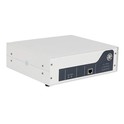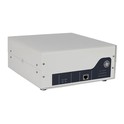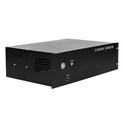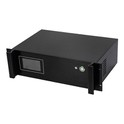Speaking of power, we must first know how ultrasonic transducers work:
1. The first is pulse work, that is, it emits once, then stops, emits again, and stops again.
2. The second is continuous work, that is, it always emits unless it stops working.
In fact, the calculation of power is the same as usual, and the formula used is "voltage x current = power". For example: a 105Khz air transducer, the working voltage is 100V, the current is 0.5A, and the power is 100Vx0.5A=50W.
Because under pulse working conditions, the pulse current is difficult to measure instantly, if you don't know the specific current, just use "working voltage x working voltage ÷ transducer resistance". For example: a 1Mhz underwater acoustic transducer, the working voltage is 20V, the transducer resistor is 15 ohms, then the power is 20Vx20V÷15 ohms=26.6W.
For transducers working underwater, the power of continuous operation can be close to the power of pulse operation, and the power of continuous operation can reach 70~90% of the power of pulse operation.
For transducers working in the air, the power of continuous operation is very different from the power of pulse operation, and the power of continuous operation is only 5~10% of the power of pulse operation.
Because the transducer will generate heat when working continuously, water is a good conductor of heat in water and can quickly take away heat, so the power of continuous operation can be very high. However, in the air, the heat generated by the transducer is large and cannot be quickly dissipated, so the transducer is easy to burn out. Generally, it is only 1/10~1/20 of the pulse working power.
May 06, 2024
What Is The Power Of An Ultrasonic Transducer?
Send Inquiry






